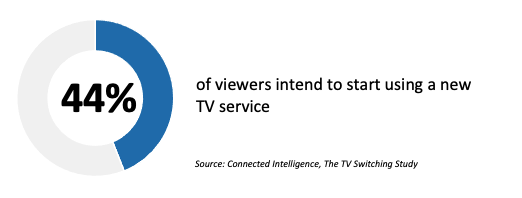
Targeted programming drove vMVPD growth
Niche vMVPD players, Philo and FuboTV, recently announced continued increases in their subscriber base. Philo’s $20/month entertainment content focused package helped drive growth to 800K subscribers, an increase of 50K from August. Meanwhile, FuboTV, whose primary focus is live sports, improved subscriber numbers to 455K. The return of live sports certainly helped to drive increased usage of the service. With cord cutting not letting up, consumers have many different options to get the type of programming that meets their needs. Of note, market leader Hulu, exceeded 4 million subscribers, surpassing Verizon FIOS, Altice and Cox.
The NPD Take:
- While many vMVPDs have struggled with churn, smaller services like Philo have found success with tailored, lower priced offerings. Unlike competitors that ballooned in scope and price, Philo continues to focus on a targeted low price offering; a move T-Mobile is looking to replicate and scale.
- The tides have turned with virtual MVPDs now growing past traditional cable providers. Expect this trend to continue as 2020 activated a transition to digital.
HBO Max lands on Roku, sort of
Roku’s new software update now allows Apple device owners to send content from their devices for playback on Roku. This is good news for apps currently not available on Roku such as HBO Max. HBO Max subscribers with an Apple device will be able to cast their favorite shows or movies via the HBO Max app on their Apple devices supported by Apple AirPlay2. The new feature will only be available on newer Roku 4K models. While the solution isn’t perfect, it could certainly help appease fans of HBO’s content who may not have been able to stream to their TVs.
The NPD Take:
- Since launching earlier this year, HBO Max reach has been limited without a distribution deal with the two largest streaming device manufacturers, Roku and Amazon. The AirPlay workaround could provide some relief to current HBO Max subscribers and help open opportunities to bring in new subscribers.
- This is a stop gap. A majority of viewers will want a native app.
Disney streaming leads the way
Disney ended the fiscal year with strong subscriber growth numbers across the various direct-to-consumer services. Disney+ finished the first year with almost 74 million subscribers, while ESPN+ and Hulu had solid fourth quarters to end the year with 10.3 million and 36.6 million subscribers, respectively. Disney+ continues to roll out internationally, including Latin America this month. The direct-to-consumer business has become a key pillar for Disney’s future success.
The NPD Take:
- Disney’s direct-to-consumer impressive growth indicates strong demand for and brand equity of Disney content. Having exclusive content that people want to see has been the biggest asset for the company. Likewise, content production gaps will present the greatest challenge for minimizing churn in 2021.
- Disney has also shown the value of bundling services as a means to driving subscriber retention. While content gaps may result in less usage of one service at any point in time, bundled consumers may be less likely to cancel compared to those with just the standalone service.


